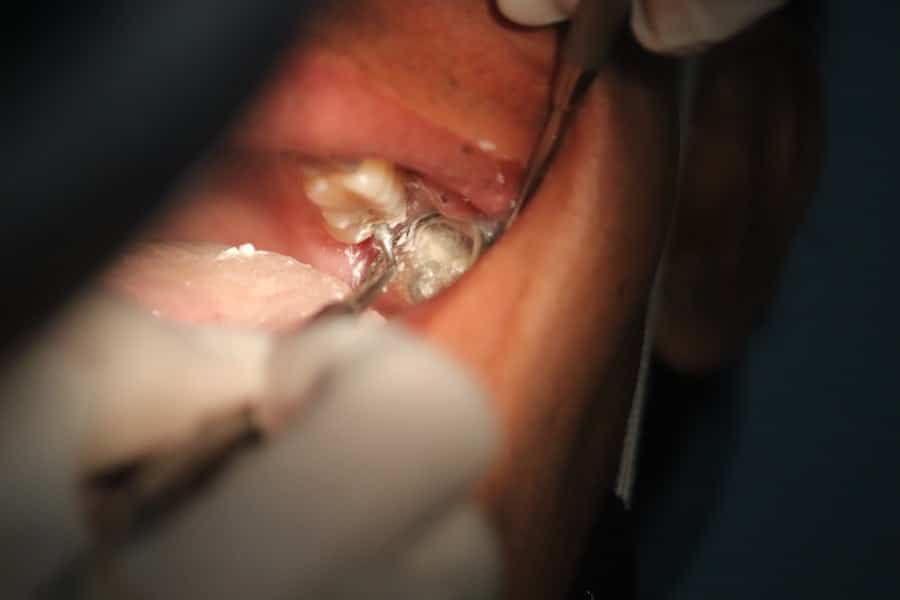The advent of smart technology has revolutionized numerous fields, and orthopedic medicine is no exception. Smart implants, which integrate advanced sensors and communication technologies into traditional orthopedic devices, are transforming the landscape of recovery and rehabilitation. These implants are designed not only to support the structural integrity of bones and joints but also to provide real-time data that can significantly enhance patient outcomes.
By leveraging the capabilities of smart implants, healthcare providers can monitor healing processes more effectively, tailor rehabilitation programs, and ultimately improve the quality of life for patients recovering from orthopedic surgeries. The integration of smart technology into orthopedic implants represents a significant leap forward in personalized medicine. Traditional implants have long been limited to their mechanical functions, providing support without any feedback mechanism.
In contrast, smart implants can collect and transmit data regarding the patient’s condition, such as load-bearing capacity, movement patterns, and even biochemical markers indicative of healing. This data-driven approach allows for a more nuanced understanding of each patient’s recovery journey, enabling clinicians to make informed decisions based on real-time information rather than relying solely on periodic assessments or subjective reports from patients.
Key Takeaways
- Smart implants in orthopedic recovery are revolutionizing the way patients are monitored and treated.
- These implants play a crucial role in tracking progress and providing real-time data to healthcare professionals.
- Smart implants aid in rehabilitation and physical therapy by providing accurate feedback and personalized treatment plans.
- The advantages of using smart implants include improved patient outcomes, reduced recovery time, and better overall management of orthopedic conditions.
- The future of smart implants in orthopedic surgery and recovery looks promising, with potential for further advancements in technology and patient care.
The Role of Smart Implants in Monitoring and Tracking Progress
Continuous Monitoring for Informed Care
Smart implants are equipped with sensors that continuously monitor and track a patient’s recovery progress, providing invaluable insights into the healing process. These implants can measure various parameters, such as the amount of weight being placed on a joint or bone, which is crucial for determining whether a patient is adhering to post-operative restrictions.
Early Identification of Complications
The continuous monitoring enabled by smart implants helps clinicians identify potential complications early, such as implant failure or improper healing. This allows for timely interventions that can prevent further issues. Moreover, the data collected by smart implants can be integrated into digital health platforms, enabling both patients and healthcare providers to visualize recovery trends over time.
Empowering Patients and Healthcare Providers
This capability fosters a collaborative approach to rehabilitation, as patients can actively engage with their recovery process by accessing their data through mobile applications or web portals. For example, a patient recovering from knee surgery can see how their activity levels change over weeks and months, providing motivation to adhere to prescribed rehabilitation exercises. This transparency not only enhances patient engagement but also empowers healthcare providers to adjust treatment plans based on objective data rather than anecdotal evidence.
How Smart Implants Aid in Rehabilitation and Physical Therapy

Smart implants play a pivotal role in enhancing rehabilitation and physical therapy outcomes. By providing real-time feedback on a patient’s movements and load-bearing activities, these devices enable therapists to tailor rehabilitation programs to individual needs. For instance, if a smart implant detects that a patient is placing excessive stress on a healing joint during physical therapy exercises, the therapist can modify the regimen to prevent further injury.
This level of customization is particularly beneficial in orthopedic recovery, where the risk of re-injury is often high. Additionally, smart implants can facilitate remote monitoring of patients during their rehabilitation journey. With the ability to transmit data wirelessly, healthcare providers can keep track of their patients’ progress without requiring frequent in-person visits.
This is especially advantageous for patients living in remote areas or those with mobility challenges. For example, a patient recovering from hip replacement surgery can have their progress monitored from home, allowing for timely adjustments to their therapy plan without the need for constant travel to a clinic. This not only saves time and resources but also enhances patient satisfaction by providing more flexible care options.
The Advantages of Using Smart Implants for Orthopedic Recovery
The advantages of incorporating smart implants into orthopedic recovery are manifold. First and foremost, these devices enhance patient safety by providing continuous monitoring that can alert healthcare providers to potential complications before they escalate. For instance, if a smart implant detects abnormal stress patterns that could indicate implant loosening or fracture, clinicians can intervene promptly to address the issue.
Furthermore, smart implants contribute to improved rehabilitation outcomes by enabling more personalized treatment plans. The data collected from these devices allows healthcare providers to identify trends and patterns in a patient’s recovery that may not be apparent through traditional assessment methods.
For example, if a patient consistently struggles with specific movements during therapy sessions, this information can be used to adjust their rehabilitation program accordingly. By tailoring interventions based on objective data rather than generalized protocols, clinicians can optimize recovery times and enhance overall patient satisfaction.
The Future of Smart Implants in Orthopedic Surgery and Recovery
As technology continues to advance at an unprecedented pace, the future of smart implants in orthopedic surgery and recovery looks promising. Innovations in materials science and sensor technology are paving the way for even more sophisticated devices that can provide deeper insights into patient health. For instance, future smart implants may incorporate advanced biomaterials that not only support bone healing but also actively promote tissue regeneration through bioactive compounds released in response to specific stimuli.
Moreover, the integration of artificial intelligence (AI) into smart implant systems holds great potential for enhancing decision-making processes in orthopedic care. AI algorithms could analyze vast amounts of data collected from multiple patients to identify patterns that inform best practices in rehabilitation and recovery protocols. This could lead to the development of predictive models that help clinicians anticipate complications or optimize treatment plans based on individual patient profiles.
As these technologies evolve, we may see a shift towards more proactive and preventive approaches in orthopedic care, ultimately leading to better outcomes for patients.
Potential Risks and Limitations of Smart Implants in Orthopedic Recovery

Despite the numerous benefits associated with smart implants, there are potential risks and limitations that must be considered. One significant concern is the issue of data security and privacy. As smart implants collect sensitive health information, there is an inherent risk of data breaches or unauthorized access to personal health records.
Ensuring robust cybersecurity measures are in place will be crucial as these technologies become more widespread in clinical practice. Additionally, there may be challenges related to the integration of smart implants into existing healthcare systems. Clinicians may require training to effectively interpret the data generated by these devices and incorporate it into their decision-making processes.
Furthermore, there may be disparities in access to technology among different patient populations, potentially leading to inequities in care. Addressing these challenges will be essential for maximizing the benefits of smart implants while minimizing potential drawbacks.
Case Studies and Success Stories of Smart Implants in Orthopedic Recovery
Numerous case studies highlight the successful implementation of smart implants in orthopedic recovery settings. One notable example involves a clinical trial conducted with patients undergoing total knee arthroplasty (TKA). In this study, participants were fitted with smart knee implants equipped with sensors that monitored joint movement and load distribution during rehabilitation exercises.
The results demonstrated that patients with smart implants experienced significantly faster recovery times compared to those with traditional implants, as clinicians were able to make timely adjustments to their rehabilitation protocols based on real-time data. Another success story comes from a pilot program involving smart hip implants designed for patients recovering from hip fractures. These implants were equipped with accelerometers that tracked patients’ mobility levels post-surgery.
The data collected allowed healthcare providers to identify patients at risk for complications such as falls or delayed recovery. By implementing targeted interventions based on this information, clinicians were able to reduce hospital readmission rates and improve overall patient outcomes.
The Impact of Smart Implants on Orthopedic Recovery and Rehabilitation
The integration of smart implants into orthopedic recovery represents a transformative shift in how healthcare providers approach patient care. By enabling continuous monitoring and providing real-time feedback on recovery progress, these devices empower both patients and clinicians to engage more actively in the rehabilitation process. The advantages of personalized treatment plans, enhanced safety measures, and improved outcomes underscore the potential of smart implants to redefine orthopedic care.
With ongoing advancements in materials science, sensor technology, and artificial intelligence, we can anticipate a new era of orthopedic care characterized by proactive interventions and tailored treatment strategies. While challenges remain regarding data security and equitable access to technology, the success stories emerging from current implementations demonstrate that smart implants have already begun to make a significant impact on orthopedic recovery and rehabilitation practices worldwide.
A related article discussing how smartwatches are enhancing connectivity can be found here. This article explores the ways in which wearable technology like smartwatches can improve communication and connectivity in various aspects of daily life. Just as smart implants are revolutionizing orthopedic recovery, smartwatches are changing the way we interact with technology and each other.
FAQs
What are smart implants in orthopedics?
Smart implants in orthopedics are medical devices that are embedded with sensors and wireless technology to monitor and support the recovery process of orthopedic patients. These implants can provide real-time data on the patient’s movement, load bearing, and healing progress.
How do smart implants support orthopedic recovery?
Smart implants support orthopedic recovery by providing valuable data to both the patient and the healthcare provider. They can track the patient’s activity levels, monitor the healing process, and alert the healthcare provider to any potential issues. This data can help in creating personalized treatment plans and ensuring optimal recovery.
What are the benefits of using smart implants in orthopedics?
The benefits of using smart implants in orthopedics include improved monitoring of the patient’s progress, early detection of complications, personalized treatment plans, and better overall outcomes. These implants can also help in reducing the need for frequent in-person visits to the healthcare provider.
Are there any risks or limitations associated with smart implants in orthopedics?
While smart implants in orthopedics offer many benefits, there are also potential risks and limitations to consider. These may include the risk of infection at the implant site, potential malfunction of the device, and the need for additional training for healthcare providers to interpret and utilize the data effectively.
What is the future outlook for smart implants in orthopedics?
The future outlook for smart implants in orthopedics is promising, with ongoing advancements in sensor technology, wireless communication, and data analytics. As these technologies continue to evolve, smart implants are expected to play an increasingly important role in supporting orthopedic recovery and improving patient outcomes.

